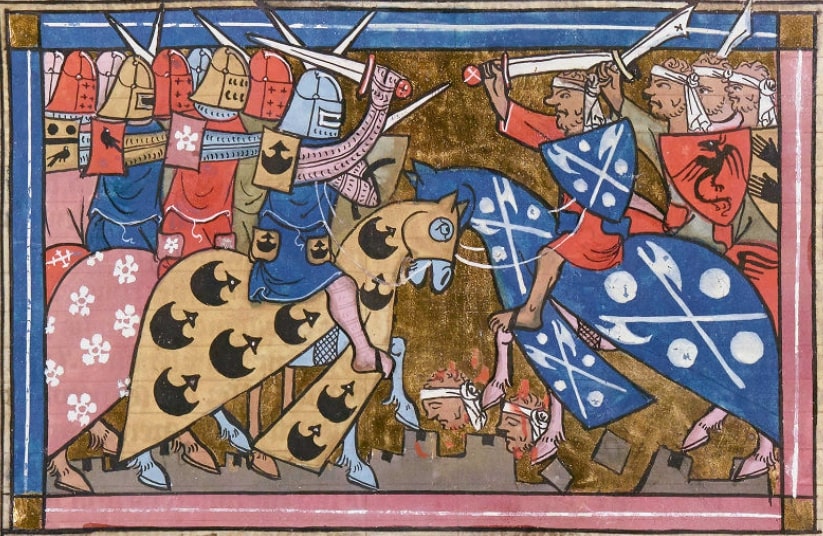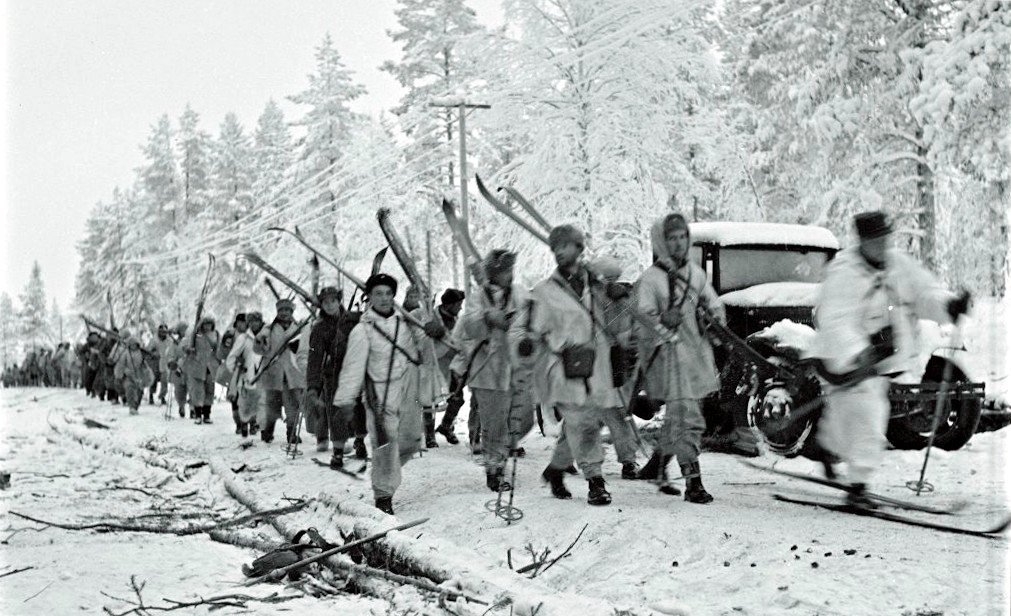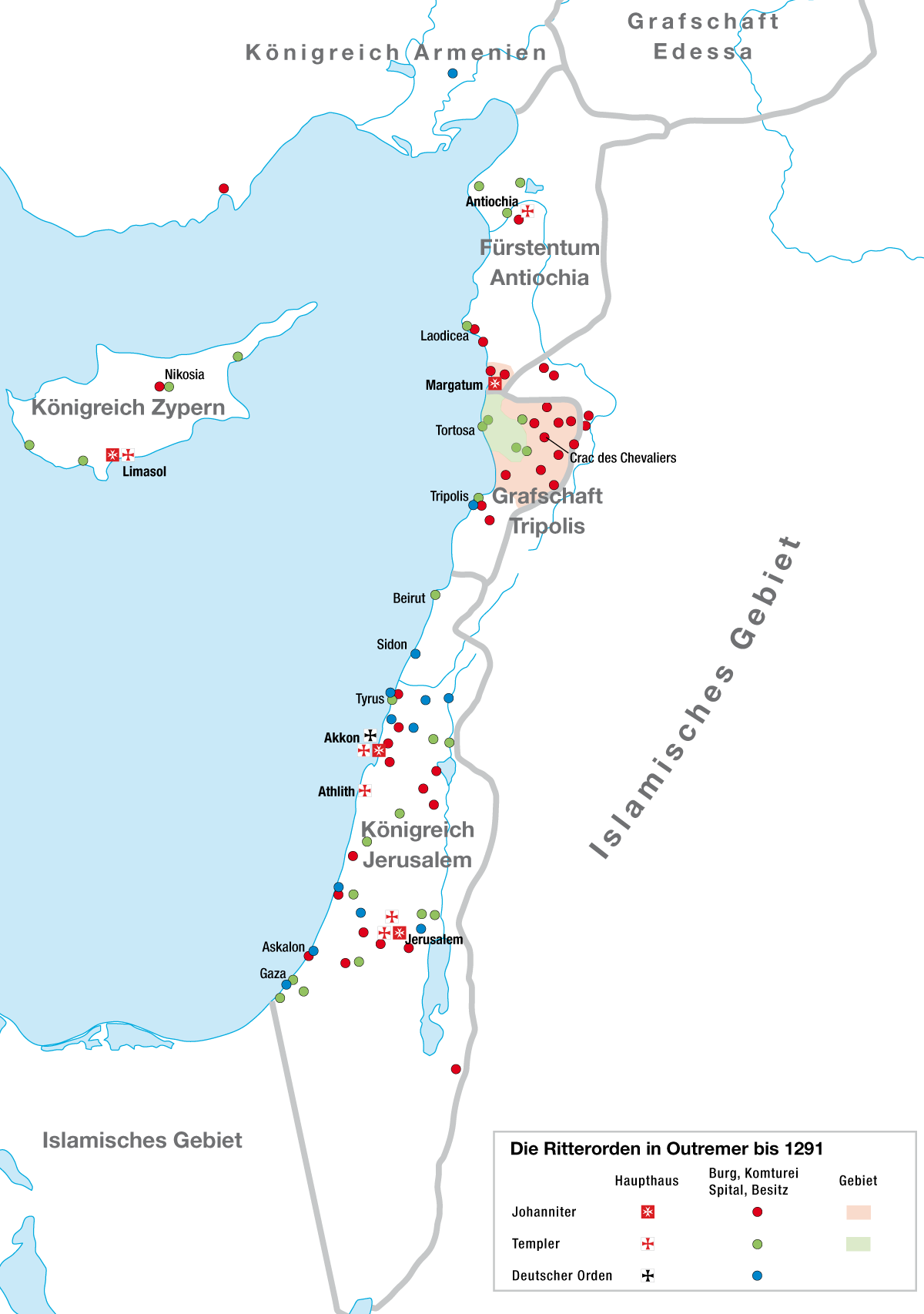|
Battle Of Al-Babein
The Battle of al-Babein took place on March 18, 1167, during the third Crusader invasion of Egypt. King Amalric I of Jerusalem, and a Zengid army under Shirkuh, both hoped to take the control of Egypt over from the Fatimid Caliphate. Saladin served as Shirkuh’s highest-ranking officer in the battle. The result was a tactical draw between the forces, however the Crusaders failed to gain access to Egypt. Background After the death of Zengi, his son, Nur al-Din came to power in Aleppo. In 1154, he gained control of Damascus when there was no one in power over the city. He became the first Seljuq leader since the 1090s to unite north and south Syria. Nur al-Din embraced jihad ideals when battling against the Franks and was a crucial figure in the recovery of Jerusalem. Vizier Shawar had full authority over the Fatimids and was the advisor to the caliph. Shawar required the support of Nur al-Din’s generals to gain control. Shawar turned to Shirkuh for assistance. After Shaw ... [...More Info...] [...Related Items...] OR: [Wikipedia] [Google] [Baidu] |
Crusade
The Crusades were a series of religious wars initiated, supported, and sometimes directed by the Latin Church in the medieval period. The best known of these Crusades are those to the Holy Land in the period between 1095 and 1291 that were intended to recover Jerusalem and its surrounding area from Islamic rule. Beginning with the First Crusade, which resulted in the recovery of Jerusalem in 1099, dozens of Crusades were fought, providing a focal point of European history for centuries. In 1095, Pope Urban II proclaimed the First Crusade at the Council of Clermont. He encouraged military support for Byzantine emperor AlexiosI against the Seljuk Turks and called for an armed pilgrimage to Jerusalem. Across all social strata in western Europe, there was an enthusiastic response. The first Crusaders had a variety of motivations, including religious salvation, satisfying feudal obligations, opportunities for renown, and economic or political advantage. Later crusades were ... [...More Info...] [...Related Items...] OR: [Wikipedia] [Google] [Baidu] |
Shawar
Shawar ibn Mujir al-Sa'di ( ar, شاور بن مجير السعدي, Shāwar ibn Mujīr al-Saʿdī; died 18 January 1169) was an Arab ''de facto'' ruler of Fatimid Egypt, as its vizier, from December 1162 until his assassination in 1169 by the general Shirkuh, the uncle of the Kurdish leader Saladin, with whom he was engaged in a three-way power struggle against the Crusader Amalric I of Jerusalem. Shawar was notorious for continually switching alliances, allying first with one side, and then the other, and even ordering the burning of his own capital city, Fustat, just so that the enemy could not have it. Biography Hailing from the Banu Sa'd branch of Hawazin tribe, Shawar was born in Egypt and became the vizier at the end of the Fatimid caliphate, while al-Adid was caliph. In the mid-12th century, the Fatimid caliphate was crumbling, and Egypt had descended into a condition of near anarchy. The official head of state was the Caliph, but the true power was the Egyptian vizier, ... [...More Info...] [...Related Items...] OR: [Wikipedia] [Google] [Baidu] |
12th Century In The Fatimid Caliphate
1 (one, unit, unity) is a number representing a single or the only entity. 1 is also a numerical digit and represents a single unit of counting or measurement. For example, a line segment of ''unit length'' is a line segment of length 1. In conventions of sign where zero is considered neither positive nor negative, 1 is the first and smallest positive integer. It is also sometimes considered the first of the infinite sequence of natural numbers, followed by 2, although by other definitions 1 is the second natural number, following 0. The fundamental mathematical property of 1 is to be a multiplicative identity, meaning that any number multiplied by 1 equals the same number. Most if not all properties of 1 can be deduced from this. In advanced mathematics, a multiplicative identity is often denoted 1, even if it is not a number. 1 is by convention not considered a prime number; this was not universally accepted until the mid-20th century. Additionally, 1 is the ... [...More Info...] [...Related Items...] OR: [Wikipedia] [Google] [Baidu] |
Battles Involving The Seljuk Empire
A battle is an occurrence of combat in warfare between opposing military units of any number or size. A war usually consists of multiple battles. In general, a battle is a military engagement that is well defined in duration, area, and force commitment. An engagement with only limited commitment between the forces and without decisive results is sometimes called a skirmish. The word "battle" can also be used infrequently to refer to an entire operational campaign, although this usage greatly diverges from its conventional or customary meaning. Generally, the word "battle" is used for such campaigns if referring to a protracted combat encounter in which either one or both of the combatants had the same methods, resources, and strategic objectives throughout the encounter. Some prominent examples of this would be the Battle of the Atlantic, Battle of Britain, and Battle of Stalingrad, all in World War II. Wars and military campaigns are guided by military strategy, whereas ba ... [...More Info...] [...Related Items...] OR: [Wikipedia] [Google] [Baidu] |
Battles Involving The Fatimid Caliphate
A battle is an occurrence of combat in warfare between opposing military units of any number or size. A war usually consists of multiple battles. In general, a battle is a military engagement that is well defined in duration, area, and force commitment. An engagement with only limited commitment between the forces and without decisive results is sometimes called a skirmish. The word "battle" can also be used infrequently to refer to an entire operational campaign, although this usage greatly diverges from its conventional or customary meaning. Generally, the word "battle" is used for such campaigns if referring to a protracted combat encounter in which either one or both of the combatants had the same methods, resources, and strategic objectives throughout the encounter. Some prominent examples of this would be the Battle of the Atlantic, Battle of Britain, and Battle of Stalingrad, all in World War II. Wars and military campaigns are guided by military strategy, whereas ... [...More Info...] [...Related Items...] OR: [Wikipedia] [Google] [Baidu] |
Battles Of The Crusades
A battle is an occurrence of combat in warfare between opposing military units of any number or size. A war usually consists of multiple battles. In general, a battle is a military engagement that is well defined in duration, area, and force commitment. An engagement with only limited commitment between the forces and without decisive results is sometimes called a skirmish. The word "battle" can also be used infrequently to refer to an entire operational campaign, although this usage greatly diverges from its conventional or customary meaning. Generally, the word "battle" is used for such campaigns if referring to a protracted combat encounter in which either one or both of the combatants had the same methods, resources, and strategic objectives throughout the encounter. Some prominent examples of this would be the Battle of the Atlantic, Battle of Britain, and Battle of Stalingrad, all in World War II. Wars and military campaigns are guided by military strategy, whereas bat ... [...More Info...] [...Related Items...] OR: [Wikipedia] [Google] [Baidu] |
Tyerman, Christopher
Christopher Tyerman (born 22 May 1953) is an academic historian focusing on the Crusades. In 2015, he was appointed Professor of History of the Crusades at the University of Oxford. Life and career He graduated from New College, Oxford, with a first-class Bachelor of Arts degree in 1974; he lectured at the University of York between 1976 and 1977, before returning to Oxford as a research fellow at Queen's College (1977–82); in 1981, he completed his doctor of philosophy degree and won the Royal Historical Society's Alexander Prize Medal. He also took up another research fellowship at Exeter College which lasted from 1982 to 1987. All the while, he had been a medieval history lecturer at Hertford College, Oxford, since 1979 and in 2006 was elected one of its fellows."Professor Christopher Tyerman" [...More Info...] [...Related Items...] OR: [Wikipedia] [Google] [Baidu] |
Turcopoles
During the period of the Crusades, turcopoles (also "turcoples" or "turcopoli"; from the el, τουρκόπουλοι, literally "sons of Turks") were locally recruited mounted archers and light cavalry employed by the Byzantine Empire and the Crusader states. A leader of these auxiliaries was designated as Turcopolier, a title subsequently given to a senior officer in the Knights Templars and the Order of the Hospital of St John of Jerusalem, in charge of the coastal defences of Rhodes and Malta. Byzantine origins The crusaders first encountered turcopoles in the Byzantine army during the First Crusade. These auxiliaries were from diverse Turkic origins; including Pechenegs, Oghuz Turks, Uzes, Cumans, and Bulgars. Some Byzantine turcopole units under the command of General Tatikios accompanied the First Crusade and may have provided a model for the subsequent employment of indigenous auxiliary light horse in the crusader states. Composition It has been argued that, whil ... [...More Info...] [...Related Items...] OR: [Wikipedia] [Google] [Baidu] |
The Knights Templar
, colors = White mantle with a red cross , colors_label = Attire , march = , mascot = Two knights riding a single horse , equipment = , equipment_label = , battles = The Crusades, including: , anniversaries = , decorations = , battle_honours = , commander1 = Hugues de Payens , commander1_label = First Grand Master , commander2 = Jacques de Molay , commander2_label = Last Grand Master , commander3 = , commander3_label = , notable_commanders = The Poor Fellow-Soldiers of Christ and of the Temple of Solomon ( la, Pauperes commilitones Christi Templique Salomonici), also known as the Order of Solomon's Temple, the Knights Templar, or simply the Templars, was ... [...More Info...] [...Related Items...] OR: [Wikipedia] [Google] [Baidu] |
Knights Hospitaller
The Order of Knights of the Hospital of Saint John of Jerusalem ( la, Ordo Fratrum Hospitalis Sancti Ioannis Hierosolymitani), commonly known as the Knights Hospitaller (), was a medieval and early modern Catholic military order. It was headquartered in the Kingdom of Jerusalem until 1291, on the island of Rhodes from 1310 until 1522, in Malta from 1530 until 1798 and at Saint Petersburg from 1799 until 1801. Today several organizations continue the Hospitaller tradition, specifically the mutually recognized orders of St. John, which are the Sovereign Military Order of Malta, the Most Venerable Order of the Hospital of Saint John, the Bailiwick of Brandenburg of the Chivalric Order of Saint John, the Order of Saint John in the Netherlands, and the Order of Saint John in Sweden. The Hospitallers arose in the early 12th century, during the time of the Cluniac movement (a Benedictine Reform movement). Early in the 11th century, merchants from Amalfi founded a hospital ... [...More Info...] [...Related Items...] OR: [Wikipedia] [Google] [Baidu] |
Military Order (society)
A military order ( la, militaris ordo) is a Christian religious society of knights. The original military orders were the Knights Templar, the Knights Hospitaller, the Order of Saint James, the Order of Calatrava, and the Teutonic Knights. They arose in the Middle Ages in association with the Crusades, both in the Holy Land, the Baltics, and the Iberian peninsula; their members being dedicated to the protection of pilgrims and the defence of the Crusader states. They are the predecessors of chivalric orders. Most members of military orders were laymen who took religious vows, such as of poverty, chastity, and obedience, according to monastic ideals. The orders owned houses called commanderies all across Europe and had a hierarchical structure of leadership with the grand master at the top. The Knights Templar, the largest and most influential of the military orders, was suppressed in the early fourteenth century; only a handful of orders were established and recognized af ... [...More Info...] [...Related Items...] OR: [Wikipedia] [Google] [Baidu] |
Raymond Of Poitiers
Raymond of Poitiers (c. 1105–29 June 1149) was Prince of Antioch from 1136 to 1149. He was the younger son of William IX, Duke of Aquitaine, and his wife Philippa, Countess of Toulouse, born in the very year that his father the Duke began his infamous liaison with Dangereuse de Chatelherault. Assuming control Following the death of Prince Bohemund II of Antioch in 1130, the principality came under the regency first of King Baldwin II (1130–31), then King Fulk (1131–35), and finally Princess Alice (1135–36), Bohemond's widow. The reigning princess was Bohemond II's daughter, Constance (born 1127). Against the wishes of Alice, a marriage was arranged for Constance with Raymond, at the time staying in England, which he left only after the death of Henry I on 1 December 1135. Upon hearing word that Raymond was going to pass through his lands in order to marry the princess of Antioch, King Roger II of Sicily ordered him arrested. By a series of subterfuges, Raymond passe ... [...More Info...] [...Related Items...] OR: [Wikipedia] [Google] [Baidu] |






